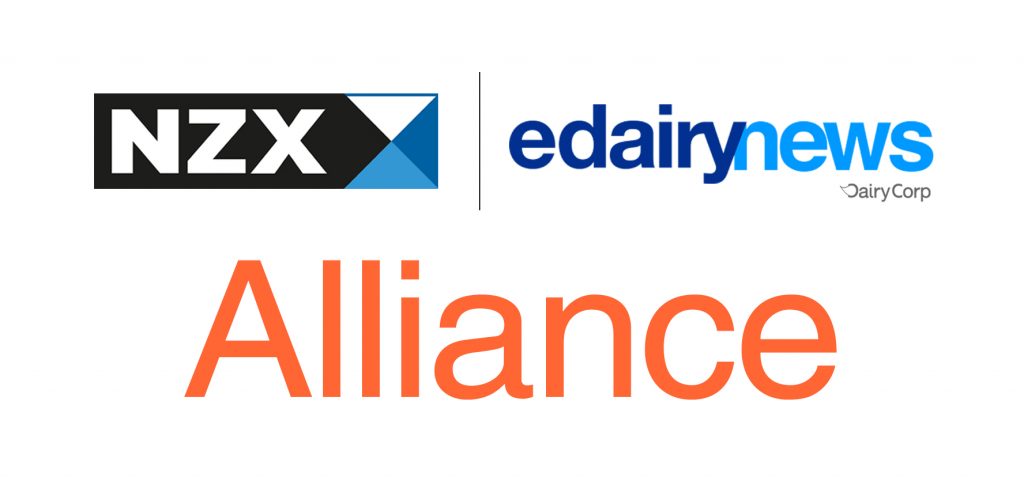Total export volume in June unfortunately trailed prior year levels by 13 percent or -28,260 metric tons on a milk-solids-equivalent basis. Value continued to be hampered by reduced prices, resulting in a 28 percent decrease for the month. A significant portion of the total export decline can be traced to weak purchases from China, dampening reduced-protein whey exports, as well as reduced European prices undercutting U.S. cheese exports – resulting in a 19 percent decline for the month of June.
Positively, though, June’s cheese exports did rebound compared to May. Whey-protein-concentrate-80+ volumes continued to impress. And Mexico’s demand is still surging, which has helped exports of nonfat-dry-milk and skim-milk powder hold steady.
The mixed performance in June mirrored the first-half results. Through June, U.S. export volume decreased 5 percent and value declined 10 percent, driven by declines in reduced-protein whey and cheese – even as nonfat-dry-milk and skim-milk powder held steady, lactose moved and whey-protein-concentrate-80+ volumes rebounded sharply.
• When looking at the U.S. export data, several key trends stand out from the first half.
• Cheese exports were hampered by cost differences compared to Europe.
• Whey-protein-concentrate-80+ regained demand with prices rebalancing.
• A strong peso and robust consumer demand supported Mexico’s import surge.
• Reduced pork prices in China dented sweet whey and permeate purchases.
• Increased competition and economic headwinds slowed U.S. exports to Southeast Asia.
Given that the trends will be key drivers for U.S. dairy-export performance through the rest of the year, we’ll dig into each of them to assess whether they are likely to persist or reverse in the second half.
U.S. cheese exports hampered
As we’ve mentioned in past reports, reduced prices for European cheeses toward the end of 2022 and into 2023 undercut U.S. cheese exporters even as U.S. prices declined as well. The data in the past few months of trade data reflects that disparity.
While the United States has still been able to maintain its position in the Americas – or strengthen in the case of Mexico – U.S. market share has come under pressure in markets where there is more competition like Korea, Japan and Saudi Arabia.
U.S. cheese exports to Korea decreased 19 percent year-to-date, largely on account of reduced-priced European product entering the market – though total imports were weaker as well. According to Korean import data, European mozzarella in June was about $1,000 per metric tons or $0.45 per pound less than Mozzarella imports from the United States. That disparity in price in the second-largest U.S. cheese market has naturally impacted the overall U.S. cheese-export performance and has been mirrored in other greatly competitive markets.
Given the sharp decrease in U.S. spot cheese prices for much of June and July, we should expect exports to rebound in the third quarter. But the recent rally at the Chicago Mercantile Exchange, which is certainly welcome news – as well as futures prices for the fourth quarter never fully being competitive with Europe even when spot prices decrease – will likely mean cheese exports later in the year will remain challenged. But if European milk production slows sharply and international prices rally – or less positively, U.S. spot prices decrease again in the fourth quarter, something we certainly don’t want to see happen – we could still see improvement toward the tail end of the year.
Verdict – Cheese exports are likely to improve in July and August, though prepare for reversion in the fourth quarter.
Whey-protein regains demand
On the flip side, U.S. exports of whey-protein-concentrate-80+ have surged in 2023. During the past seven years the only significant decrease in whey-protein-concentrate-80+ exports came when prices surged this past year to record levels. But current prices have returned to more-normal levels even if still inflated compared to 2020.
The market rebalancing has had a positive effect on demand. U.S. whey-protein-concentrate-80+ exports have increased 15 percent year-to-date. Japan, Brazil and China have been particularly active – albeit for different reasons. U.S. whey-protein-concentrate-80+ exports to Japan climbed 11 percent year-to-date as protein has become increasingly mainstream within the country, which allowed demand to weather the inflated prices better than most markets. Similarly, Brazil is quickly becoming a major market for U.S. exporters but that growth is largely thanks to the growth of sports nutrition in the market. Alternatively, demand in China is rebounding sharply in 2023 after a weak 2022, likely driven by infant-formula manufacturers rebuilding inventories.
With less price volatility, end users in international markets are more likely to launch new products highlighting protein and reformulate in favor of dairy proteins. As such, we anticipate export growth to continue through the end of the year even as protein prices have firmed of late given that they remain within a historically normal range.
Verdict – Whey-protein-concentrate-80+ export expansion will continue through the end of the year.
Mexico sees import surge
Mexican demand remains a bright spot for U.S. dairy exports amidst the wider slowdown in global demand and increased competition from other origins. In the first half of this year, U.S. dairy exports to Mexico jumped 25 percent – tremendous growth on its own, but even more impressive compared to lackluster demand out of other major U.S. trading partners like China and Southeast Asia. Mexican demand continues to be strong with no indication yet of slowing.
Looking at the product mix, the country’s import surge has been widespread. U.S. nonfat-dry-milk- and skim-milk- powder exports to the country climbed 21 percent in June and have increased 39 percent year-to-date. Cheese has also seen consistent growth – an increase of 11 percent in June and of more than 14 percent year-to-date. Interestingly, lactose also joined the party, with June volume increasing 69 percent and year-to-date volume having increased 22 percent.
Within Mexico, rebounding consumer demand – along with bouts of drought and inflated input costs pressuring domestic milk production – has necessitated greater imports. Alongside those forces, softer global prices and a strong peso also supported the affordability of imported products. All those factors are expected to remain through the second half of the year.
Verdict – The trend is expected to persist, but deceleration in imports is possible given the exceptional pace achieved thus far in 2023.
Chinese purchases slow
U.S. exports to China continued to lag in June, driven by the mixed but overall weaker demand environment within China. Total U.S. dairy exports to China in June decreased 29 percent, exacerbating the year-to-date decline of 7 percent. The primary driver of the overall decline has been the country’s lighter volume of reduced-protein whey – given that reduced-protein-whey exports to China are critical for the United States. About half of all U.S. reduced-protein-whey exports are bound for China.
A useful leading indicator of Chinese whey demand remains price movements within the pork industry. Positively, Chinese pork prices appear to be finding a floor at about 20 ¥ per kilogram. Unfortunately, 20 ¥ per kilogram is still well less than the prices that typically foretold a pork-production surge.
All this to say that pork prices, while stabilizing, will need to rally in order to see whey markets rebound. Additionally, given that the trade data lags as well, we anticipate China’s whey imports to struggle through the end of the year and thereby U.S. whey exports to China to struggle as well.
Verdict – Weaker volumes are unfortunately expected to continue through the end of the year.

Southeast Asia exports slow
Challenges in Southeast Asia come from economic challenges as well as stiffer competition, with New Zealand rerouting product previously destined for China to Southeast Asia and Europe having additional supplies given their rebound in milk production.
Those twin headwinds have naturally impacted U.S. dairy exports to the region, which lag 2022 by 22 percent year-to-date. There are declines in most of the major products – nonfat-dry-milk and skim-milk powder, reduced-protein whey and cheese.
Looking ahead, competition will remain fierce. New Zealand milk production saw a tremendous finish to their 2022-2023 milking season – an increase of 3 percent during the past six months. Additionally while China’s demand is returning for skim-milk powder, cheese and high-protein whey – whole-milk powder has lagged and is likely to continue based on recent Global Dairy Trade auction results. Both factors will contribute to additional focus on cheese and skim-milk powder from New Zealand manufacturers as well as a preference toward Southeast Asia given shipping advantages.
Additionally, while inflation is cooling and the global economy has stabilized, an economic rebound in the region taking place in the near term still appears unlikely. As such, U.S. exports to Southeast Asia are expected to remain challenged for the remainder of the year even as plenty of long-term potential in the region remains.Verdict – Slower exports are likely to continue barring a rebound in China’s demand, a poor milk-production season in New Zealand and-or an economic revival.















